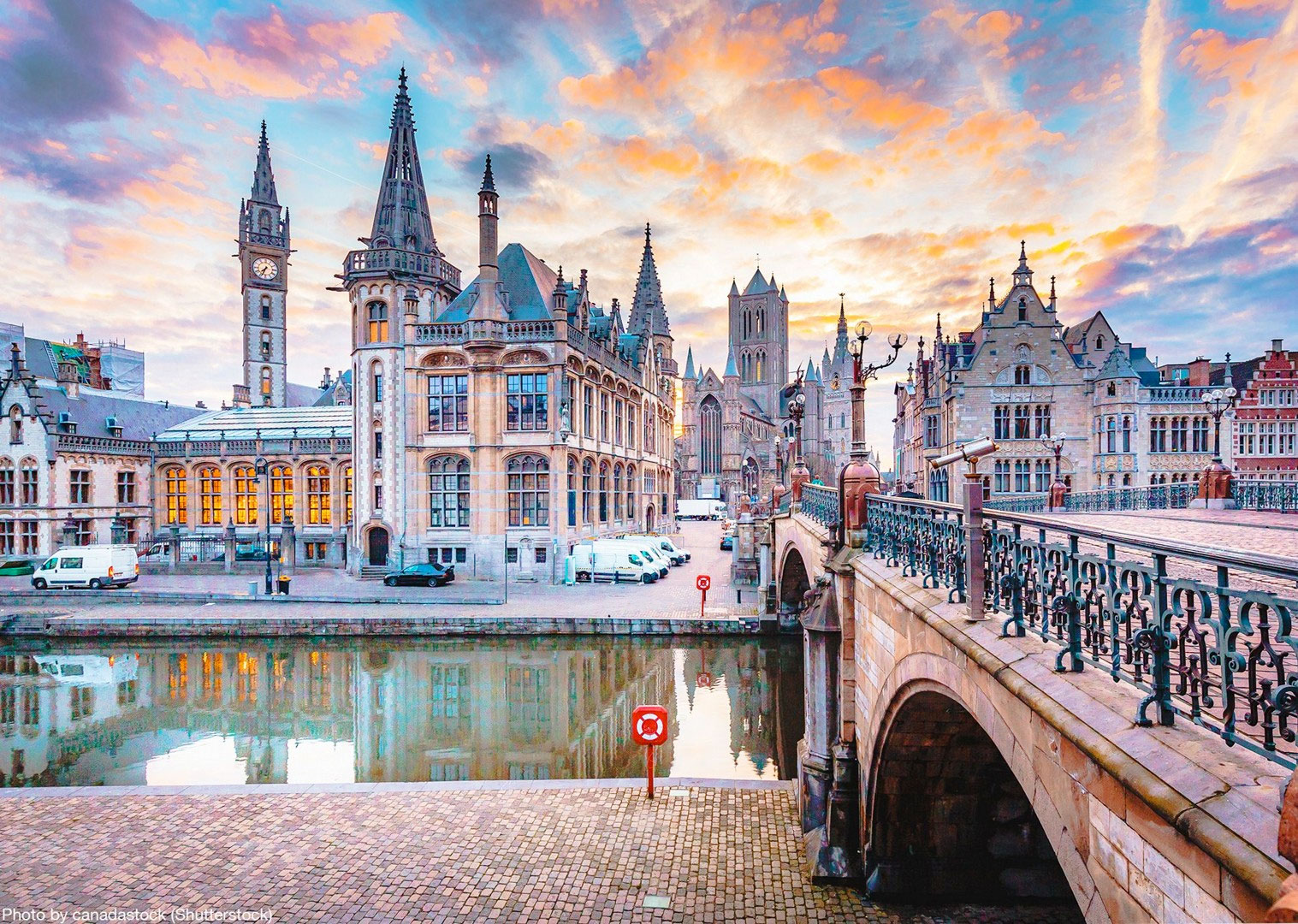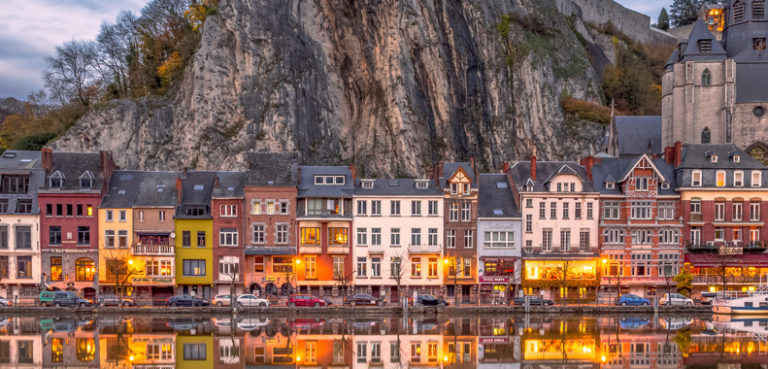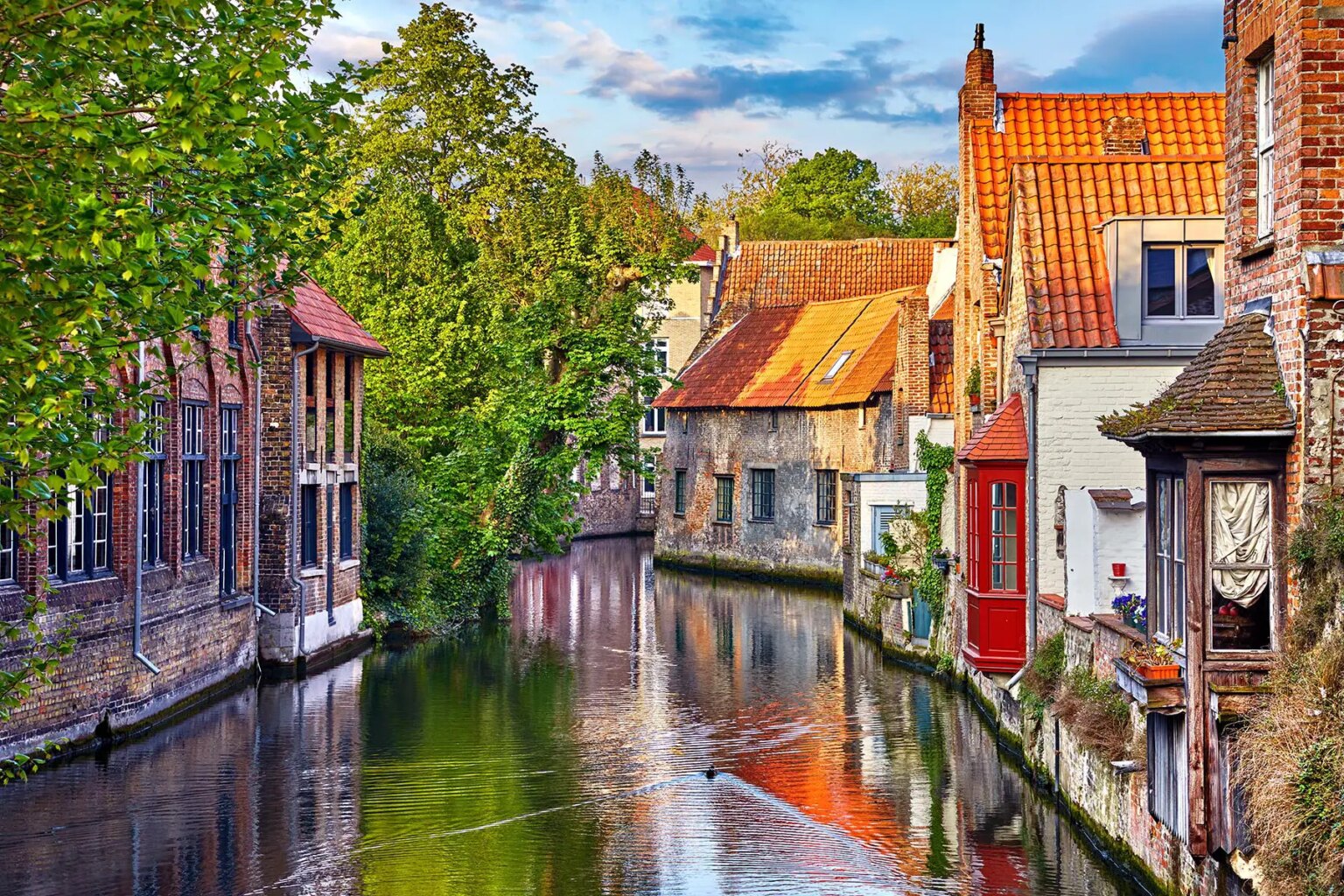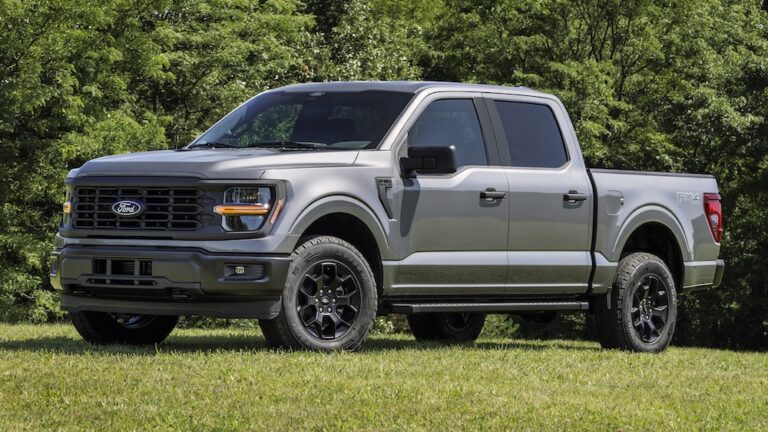Belgian Car Brands: A Journey Through Automotive Heritage and Niche Innovation
Belgian Car Brands: A Journey Through Automotive Heritage and Niche Innovation cars.truckstrend.com
Introduction: Belgium’s Quiet Roar in Automotive History
When one thinks of global automotive powerhouses, names like Germany, Japan, or the United States typically come to mind. Belgium, a small nation renowned for its chocolates, beers, and historic cities, rarely features prominently in the mainstream automotive narrative. Yet, beneath this unassuming exterior lies a surprisingly rich and often overlooked automotive history, punctuated by periods of innovation, luxury, and engineering prowess.
Belgian Car Brands: A Journey Through Automotive Heritage and Niche Innovation
This article embarks on a comprehensive journey through the world of Belgian car brands. We will delve into the golden age of Belgian automaking, when prestigious marques rivaled the best in the world, explore the transformative shift towards assembly that defined much of the 20th century, and finally, discover the niche, high-performance brands that represent Belgium’s modern automotive spirit. While the landscape of Belgian car production has changed dramatically over the decades, the story of its brands offers a fascinating glimpse into a nation’s enduring contribution to the global automotive tapestry.
The Golden Age: Pioneers of Belgian Automotive Excellence (Late 19th – Mid 20th Century)
The late 19th and early 20th centuries marked a vibrant period for Belgian automotive innovation. Numerous manufacturers emerged, many producing vehicles of exceptional quality and luxury that competed on the international stage.
Minerva: The Belgian Rolls-Royce
Arguably the most famous and prestigious Belgian car brand, Minerva was synonymous with luxury, elegance, and advanced engineering. Founded in Antwerp in 1902 by Sylvain de Jong, Minerva quickly established itself as a producer of high-quality automobiles, motorcycles, and bicycles.
- Key Information: Minerva cars were renowned for their meticulous craftsmanship, powerful engines, and luxurious interiors. They famously adopted the Knight sleeve-valve engine, which offered quieter operation and greater efficiency compared to conventional poppet-valve engines of the era. This technological edge, combined with exquisite coachwork, earned Minerva the moniker "The Belgian Rolls-Royce."
- Benefits: Owning a Minerva was a status symbol, appealing to royalty, industrialists, and celebrities worldwide, including figures like Henry Ford and the King of Belgium. Their cars were built to last, offering remarkable durability and a smooth, refined driving experience.
- Challenges: Despite its prestige, Minerva faced significant headwinds. The economic downturns of the 1920s and the Great Depression severely impacted demand for luxury vehicles. The company attempted to diversify into more affordable models and even commercial vehicles, but fierce competition from larger, more mass-production-oriented manufacturers ultimately proved insurmountable. Minerva ceased car production in 1934, though the brand briefly resurfaced after WWII for assembling Land Rovers.

Imperia: Innovation and Endurance
Imperia, founded in 1904 in Liège, was another cornerstone of Belgian automaking, known for its innovative spirit and remarkable resilience. Unlike Minerva’s singular focus on luxury, Imperia produced a broader range of vehicles, from sporting cars to more utilitarian models.
- Key Information: Imperia was one of the first European manufacturers to adopt assembly line production techniques, showcasing a forward-thinking approach to manufacturing efficiency. They were also pioneers in engine design, notably developing advanced overhead camshaft engines. After World War I, Imperia acquired several other struggling Belgian marques, including Métallurgique, Nagant, and Excelsior, consolidating a significant portion of the Belgian automotive industry under its umbrella.
- Practical Advice (for collectors): Imperia models from different eras offer varied collecting experiences. Early models are rare and command high values, while later models (especially those produced after acquiring other brands) might offer a more accessible entry point for enthusiasts looking to own a piece of Belgian automotive history. Parts can be challenging but not impossible to source, especially through specialized classic car clubs.
- Benefits: Imperia cars were known for their robust engineering and performance, particularly their sporting models. The brand’s ability to adapt and absorb competitors demonstrated a strong business acumen and a commitment to survival in a challenging market.
- Challenges: Like other Belgian manufacturers, Imperia struggled against the economic pressures of the interwar period and the dominance of foreign mass producers. While it continued vehicle assembly well into the 1950s (producing Standard and Triumph cars under license), its own car production ceased earlier, marking the end of its independent manufacturing.


FN (Fabrique Nationale de Herstal): Beyond Firearms
While primarily renowned for its firearms, FN (Fabrique Nationale de Herstal), established in 1889, also had a significant foray into the automotive world, producing high-quality cars and motorcycles.
- Key Information: FN cars, produced from 1900 to 1935, were known for their robust construction and reliability. They produced a wide range of models, from small two-seaters to larger luxury vehicles, and even trucks and buses. Their engineering expertise from arms manufacturing translated into well-built and durable automobiles.
- Benefits: FN cars offered a blend of practicality and quality, appealing to a broader market than ultra-luxury brands. Their diverse range meant they had a vehicle for various needs.
- Challenges: As with others, the economic crises and the shift towards more affordable, mass-produced vehicles from larger international companies made independent car production unsustainable for FN.
Excelsior: Another Star in the Firmament
Excelsior, founded in 1903, was another Belgian luxury car manufacturer that competed directly with Minerva.
- Key Information: Excelsior cars were known for their powerful engines (including six-cylinder models) and elegant coachwork, often featuring bespoke designs for discerning clients. They were particularly successful in motor racing, showcasing their engineering capabilities.
- Challenges: Despite their quality and sporting achievements, Excelsior faced similar market pressures to Minerva. It was eventually absorbed by Imperia in 1929, marking the end of its independent existence.
Other Notable Contenders
Many other smaller Belgian car brands existed during this golden age, each contributing to the nation’s automotive tapestry:
- Nagant: Known for its quality and sporting achievements, later acquired by Imperia.
- Métallurgique: Produced high-quality, often sporting, cars before being absorbed by Imperia.
- Miesse: Specialised in larger, robust vehicles, including commercial vehicles and luxury cars.
- Vini: A smaller manufacturer known for its innovative designs.
The collective fate of these brands was largely sealed by two World Wars, the devastating Great Depression, and the rise of mass production from larger, more resource-rich nations. Belgium’s relatively small domestic market and reliance on exports made its luxury-oriented manufacturers particularly vulnerable to global economic shocks.
The Great Transformation: From Makers to Assemblers
As the independent Belgian car brands faded, Belgium’s role in the global automotive industry underwent a significant transformation. Rather than designing and manufacturing its own marques, the country became a crucial hub for foreign car manufacturers setting up assembly plants.
- Impact: Major international players like Ford (Genk), Opel (Antwerp), Volvo (Ghent), Volkswagen (Forest/Brussels), and Audi (Forest/Brussels) established large-scale assembly operations in Belgium. This shift provided significant economic benefits, creating thousands of jobs, fostering a skilled automotive workforce, and contributing substantially to Belgium’s GDP.
- Important Consideration: While these plants produced millions of cars, they were not "Belgian car brands." The vehicles were designed elsewhere, and the profits largely repatriated. However, this era cemented Belgium’s reputation for high-quality automotive manufacturing and logistics, demonstrating its capability as a reliable and efficient production base for global brands.
- Challenges: The reliance on foreign investment meant that Belgium’s automotive sector became vulnerable to global corporate restructuring and economic downturns. The closures of plants like Ford Genk and Opel Antwerp in the 21st century served as stark reminders of this dependency, leading to significant job losses and economic disruption.
The Modern Era: Niche Craftsmanship and Supercar Dreams
In the contemporary automotive landscape, the idea of a mainstream Belgian car brand is largely a historical concept. However, the spirit of Belgian engineering and craftsmanship endures in highly specialized, niche ventures.
Gillet: The Vertigo’s High-Flying Legacy
The most prominent active Belgian car brand today is Gillet, founded by former racing driver Tony Gillet. Gillet is a testament to bespoke craftsmanship and extreme performance, producing ultra-low volume supercars.
- Key Information: Tony Gillet, a former racing driver and importer of Donkervoort cars, embarked on his own automotive dream in the early 1990s. The result was the Gillet Vertigo, first unveiled in 1991. The Vertigo is renowned for its lightweight construction, often employing carbon fiber extensively, and its exceptional power-to-weight ratio. Early models used engines from Ford and Alfa Romeo, while later iterations have featured more powerful units, including engines from Maserati.
- Type/Category: The Gillet Vertigo falls squarely into the ultra-exclusive, high-performance supercar category. Each car is largely hand-built to order, offering a high degree of customization.
- Benefits: The Vertigo offers an exhilarating, raw driving experience with incredible acceleration and handling. Its extreme rarity ensures exclusivity and makes it a unique collector’s item. It embodies bespoke Belgian engineering and a passion for pure driving performance.
- Challenges: As a low-volume manufacturer, Gillet faces significant challenges in terms of production costs, economies of scale, and global brand recognition against established supercar giants. Production numbers remain extremely low, making the cars incredibly rare and difficult to acquire.
- Actionable Insights: For enthusiasts interested in modern Belgian automotive ingenuity, the Gillet Vertigo represents the pinnacle. While direct purchase is limited to a very select few, learning about its engineering and design offers insight into the potential of small, dedicated teams to push automotive boundaries. Occasionally, a Vertigo may appear at high-end classic car auctions or specialized supercar dealerships.
While other small-scale or concept car ventures may exist, Gillet stands out as the most consistent and recognized modern Belgian car brand producing complete vehicles.
Navigating the World of Belgian Car Brands: Practical Advice and Considerations
For those interested in exploring or acquiring a piece of Belgian automotive history or a modern rarity, practical advice is essential.
For Collectors of Vintage Belgian Cars
- Rarity and Parts Sourcing: Vintage Belgian cars, especially from the pre-WWII era, are exceedingly rare. This rarity translates into significant challenges for parts sourcing. Many components are no longer manufactured and must be fabricated by skilled artisans.
- Restoration Challenges: Restoring a Minerva or Imperia requires specialized knowledge, dedicated workshops, and a substantial budget. These cars represent a significant investment in time and money.
- Valuation: Due to their rarity and historical significance, well-restored examples of prestigious Belgian marques like Minerva can command very high prices at auction. Values are influenced by provenance, originality, and condition.
- Practical Advice:
- Network: Join international classic car clubs, especially those focused on pre-war European luxury cars. These networks are invaluable for finding parts, sharing knowledge, and connecting with restorers.
- Specialized Restorers: Seek out restorers with proven experience in pre-war European vehicles.
- Historical Research: Thorough research into the specific model and its history can add significant value and aid in authentic restoration.
For Admirers of Modern Niche Brands (Gillet)
- Accessibility: Gillet Vertigos are produced in extremely limited numbers, making them highly exclusive. Direct purchase is usually a bespoke process with the manufacturer, and pre-owned models rarely appear on the market.
- Pricing: New Gillet Vertigo models are priced in the supercar segment, reflecting their bespoke nature, advanced materials, and extreme performance.
- Ownership Experience: Owning a Gillet Vertigo is about more than just driving; it’s about owning a piece of automotive art and engineering excellence. It often involves a direct relationship with the founder and the small team that builds the car.
Experiencing the Legacy
For anyone wishing to immerse themselves in Belgian automotive heritage without the commitment of ownership, there are excellent opportunities:
- Autoworld Brussels: Located in the Parc du Cinquantenaire, Autoworld is Belgium’s premier automotive museum. It houses an impressive collection of vehicles, including many examples of historical Belgian marques like Minerva, Imperia, and FN, offering a comprehensive journey through the nation’s automotive past.
- Classic Car Shows and Events: Keep an eye on international classic car shows (e.g., InterClassics Brussels) and local Belgian events. These often feature beautifully preserved examples of Belgian vintage cars.
- Historical Societies: Various historical societies and enthusiasts’ clubs are dedicated to preserving the legacy of specific Belgian car brands. Engaging with these groups can provide deep insights and access to rare information.
Comprehensive Overview: Table of Belgian Car Brands
| Brand Name | Era/Status | Primary Vehicle Type | Key Characteristics | Market Positioning/Value Proposition |
|---|---|---|---|---|
| Minerva | 1902-1934 (original) / Defunct | Luxury Cars, Motorcycles | Meticulous craftsmanship, sleeve-valve engines, opulent interiors. | Ultra-luxury, high-end competitor to Rolls-Royce. Highly sought-after classic. |
| Imperia | 1904-1958 (car production ceased earlier) / Defunct | Diverse (Sporting, Luxury, Commercial) | Early adoption of assembly lines, robust engineering, acquired other brands. | Mid-range to luxury, resilient, influential in consolidating Belgian auto industry. Valued classic. |
| FN | 1900-1935 (cars) / Defunct (automotive) | Cars, Motorcycles, Commercial Vehicles | Reliable, well-engineered, diverse range, robust construction. | Quality general-purpose vehicles, from affordable to mid-luxury. Valued classic. |
| Excelsior | 1903-1929 / Defunct | Luxury Cars | Powerful engines, elegant bespoke coachwork, racing success. | High-end luxury, direct competitor to Minerva. Rare and valuable classic. |
| Gillet | 1991-Present / Active (Niche) | Supercar (Vertigo) | Ultra-lightweight (carbon fiber), extreme performance, bespoke craftsmanship, rarity. | Ultra-exclusive, high-performance supercar. Modern collector’s item, high price point. |
Frequently Asked Questions (FAQ) about Belgian Car Brands
Q1: Are there any major car manufacturers in Belgium today?
A1: No, Belgium does not currently have any major, mainstream car manufacturers producing high volumes of vehicles under a native Belgian brand. Its role in the automotive industry shifted primarily to assembling vehicles for foreign brands (e.g., Audi Brussels, Volvo Cars Ghent) and supplying components.
Q2: What was the most famous Belgian car brand?
A2: Minerva is widely considered the most famous and prestigious Belgian car brand. During its heyday in the early 20th century, it was known as "The Belgian Rolls-Royce" due to its luxurious vehicles and advanced engineering.
Q3: Why did Belgian car brands decline?
A3: The decline of independent Belgian car brands was due to a combination of factors:
- Economic Downturns: World Wars and the Great Depression severely impacted demand for luxury and specialty vehicles.
- Small Domestic Market: Belgium’s relatively small home market limited scale and profitability.
- Rise of Mass Production: Larger international manufacturers adopted mass production techniques, making cars more affordable and difficult for smaller, bespoke Belgian firms to compete.
- Lack of Capital: Belgian companies often struggled to raise the significant capital required for continuous innovation and large-scale production.
Q4: Can I buy a new car made by a Belgian brand today?
A4: Yes, but only in a very niche segment. The only active Belgian car brand producing new vehicles is Gillet, which manufactures the ultra-exclusive, hand-built Vertigo supercar in very limited numbers. These are bespoke, high-performance vehicles, not mass-market cars.
Q5: Where can I see historical Belgian cars?
A5: The best place to see a comprehensive collection of historical Belgian cars is Autoworld Brussels, located in the Parc du Cinquantenaire. This museum features numerous examples of Minerva, Imperia, FN, and other Belgian marques. You might also find them at specialized classic car shows and auctions.
Q6: Is Belgium still relevant in the global automotive industry?
A6: Yes, absolutely. While no longer a major producer of native car brands, Belgium remains highly relevant as a significant hub for foreign car assembly (e.g., Audi Brussels, Volvo Cars Ghent), a strong base for automotive research and development, and a key player in the automotive logistics and parts supply chain within Europe.
Conclusion: Belgium’s Enduring Automotive Spirit
Belgium’s journey through the automotive world is a fascinating narrative of adaptation and resilience. From the opulent luxury of Minerva and Excelsior to the innovative spirit of Imperia and FN, the nation once boasted a thriving independent automotive industry that rivaled the best in Europe. Though economic turmoil and the rise of global mass production transformed its role into a crucial assembly and logistics hub, the flame of Belgian automotive craftsmanship has never truly extinguished.
Today, this spirit lives on in the bespoke excellence of Gillet, a testament to the enduring passion for engineering and performance that defines a true car brand. While Belgium may not be synonymous with mainstream car production, its rich historical legacy and continued niche contributions ensure its unique place in the grand tapestry of automotive history. The quiet roar of its past still echoes, reminding us of Belgium’s profound and often underestimated impact on the world of automobiles.




